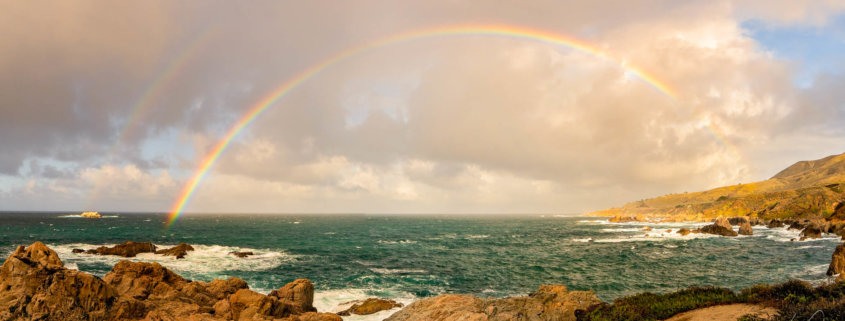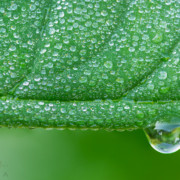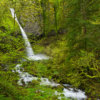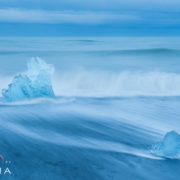Why is Creative Photography Composition so hard to Master?
I wrote the original version of this article about photography composition just before the COVID-19 pandemic began in the United States. Before I experienced the stress caused by this viral outbreak, I had no way of knowing how really important the relationship is between creative photography and a relaxed brain. I struggled with anxiety, depression, and feelings of fear at the beginning and noticed that I had no interest in nature photography.
But I’ve grown accustomed to the concept of social distancing and I’ve accepted that the life I knew is on hold for a while. As I’ve become more relaxed, I’ve noticed that I now feel the urge to go outside into my own yard and play with my camera! Ahhhh, my creative spirit has returned as my anxiety level has decreased. The concepts in this article make so much sense to me in light of what I’m experiencing right now. So I hope you are able to take advantage of this down time and find a way to relax and reawaken you creative photography spirit.
Why is Photography Composition so hard?
As you stand in front of an epic landscape scene, you long to take a photograph that captures the feelings that emerge from viewing something so beautiful. Although you can see the depth of the scene with your eyes, you’re well aware that photographs live on computer screens or flat pieces of photographic paper. It will be a challenge to capture the spacious wonder of that place in a photo.
All the knowledge of exposure and how to work all those buttons on your camera, while important, won’t effectively tell the story of this scene. Telling the story in such a way that it makes your viewer feel what you were feeling in that moment requires that you have a mastery of composition. Why do so many of us find photography composition so difficult?
This article is not a primer on the fundamentals of photography composition. There are so many resources out there that cover the basics of composition and explain the why and when of the rules. I know that my students have studied composition and they can usually recite the “rules” that are often outlined in the guidebooks. And yet, I find they continually struggle with how to create a strong composition. They often find it difficult to arrange the parts of a scene to tell their story. There seems to be a disconnect between learning the rules and putting them into practice.
Because I have encountered this so often, it made me wonder why this component of photography is often such a challenge, especially for beginning students. I looked back on my beginnings as a budding photographer and thought about what I found especially difficult and I came up with my own theory about why photography composition was so hard for me.
We Have a Right and Left Side of Our Brain
Our brain is divided into two hemispheres and within each half are areas of the brain with different functions. The left hemisphere tends to be more involved in speech, mathematics, reasoning, logic, and writing. The right half of the brain tends to be more involved in imagination, intuition, creativity, spatial relationships, and insight. These hemispheres are not completely separate; they communicate with each other and share some functions. But they tend to favor one kind of processing over the other. Some people favor one type of thinking over the other, while others are lucky enough to use both modalities equally.
What does this have to do with nature photography?
I am very left brained. I love math and precision and language and organization. So when it came time for me to learn about exposure and all the math that goes into a successful photo, I was right at home. It came so easily to me because that is a comfortable way for me to think. When I began to learn more about composition, I was fine with the concepts and could rattle off the list of “rules” but I was really struggling to use those rules in the field. Why did I struggle so much? I came to realize that I was comfortable with logic and numbers and concrete thinking, but abstract or creative thought was out of my wheelhouse.

Learning to see the location first and find your story makes it easier to make a photography composition
As I’ve worked with students the past few years, it’s become clear that those who struggle the most with creative photography composition tend to be more comfortable with math and logic, and less comfortable with creativity. It can be very difficult to “shift gears” away from an ingrained way of thinking and learn to wake up the creative side of your brain.
So, does this mean we are doomed to be mathematicians and not nature photographers?? NO!! Not at all. But it does mean that we need to recognize why photography composition can be so difficult for those of us that tend to be more concrete thinkers.
Photography Uses Our Whole Brain
This is a wonderful thing once you figure it out! Photography is a beautiful dance between math (exposure) and creativity (composition). It requires us to use both kinds of thinking to be successful. Once I realized this, I found it so much easier to make the shift between figuring out my exposure and setting up a pleasing composition.

Nature photography scene like this requires both technical and artistic expertise to capture effectively
When I point this out to students and show them how to be both logical and creative, they are often shocked at how much easier it is to create a pleasing composition. You can train yourself to first do the analytical component of photography, then complete the mission by shifting gears and embracing creativity. I know you can do it, because I did!
Practical Ways to Overcome the Challenges of Composition
This is not a comprehensive list but it should help you develop some concrete ways to improve your creative photography composition skills.
Know your nature photography strengths
Figure out what kind of “thinker” you are and how you go about problem solving. Do you tend to be more analytical or more creative in your thinking? Identifying this will help when you are learning to shift gears from logic to creativity.
Study the work of other nature photographers
Study the work of nature photographers that you admire and try to figure out their style. I caution you to not imitate them though. Use what you love about their work to develop your own style. Begin by trying to identify what compositional techniques they used to tell their story.
Learn to Visualize your photography composition
Learn to just see before clicking the shutter. Visual stimuli bombard us every moment of every day; I think we’ve learned to be “quick lookers” as a matter of time management (this is my own theory). Your nature photography will improve exponentially if you slow down and really look at the scene, try to identify what you love about the scene, find a subject, and then find the story. Make this a purposeful activity, not a casual glance. This will take a few minutes, so remember this and try to arrive before the fabulous light so that you have time for this exercise.
Embrace both technical & artistic side of nature photography
Recognize that there are two distinct components of field work: concrete (exposure and focus) and abstract (composition and story telling). Begin to develop a pattern where you start with the concrete and then move to the abstract. Make your decisions about exposure and focus, trial those choices and, when you are satisfied, make a conscious shift towards creativity and work on composition. This may feel forced at first, but continue to be methodical about it and it will soon just be the way you shoot.
Critique your own nature photos
When you are looking at the scene and making decisions about composition, have an internal dialogue. Talk to yourself about what story you are telling. What do you want the viewer to feel when they look at your image? What is the primary subject and what are the supporting actors This will help you distill down the story and you will most likely find composition much easier once. Avoid doing this out loud though… otherwise you may get some funny looks!
There is no right or wrong
There is no right or wrong composition. My first shot at a location is rarely the one I hang on the wall. I work different compositions until I find one that speaks to me. Learn to study the image on your camera to see if it works to tell your story. As you practice this, you will recognize “the shot” when you see it.
Learn to see distractions in photography composition
Learn to see distractions in your compositions. Border patrol is easy if you make it a habit and you can move to eliminate tiny distractions that are finding their way into your photograph. Look for merges between items in the foreground, middle, and background. When these planes intersect, it interferes with the sense of depth in your image. Make it a practice to really look for these things and it will become a habit.
Learn to Relax!
Being creative comes when you are thinking with a relaxed brain. If you are stressed because you are trying to get “the shot” or are comparing your LCD to the photographer standing next to you, you will likely not do your best work. Try to learn to be conscious of how you are feeling and practice relaxation. I try to practice mindful meditation on my drive to the location so I arrive in the right mood to be creative. Listen to your favorite kind of music or enjoy silence, whatever makes you feel relaxed and thoughtful.
Finally embrace nature photography for the whole brain activity that it is. It wards off aging when you are firing both sides of your brain! Exposure variables plus creative composition are the dynamic duo of a successful image. Don’t be afraid of composition; embrace it as you develop the creative right side of your brain.













What an interesting comment, David. I agree that some individuals have unique abilities that seem to defy logic! And those of us that are less “gifted” are often left standing with our mouths agape at the talents of these folks. How did they do that so easily and I can’t seem to do it even with a lot of work and study. It is the rarity of these special talents that is actually at the heart of their “specialness.” So while I know I will never be Ansel Adams, I can be the best Jane Palmer I can be, and I’ve come to realize, finally, that that is enough.
While I also agree that digital cameras have made so many things easier (this is particularly true with underwater photography!), I think we still need to work hard to use our tools to create something worthy of being called art. It isn’t enough to just click and hope we get something good! That was my impetus for writing this this topic, so that folks that struggle with being less artistic than some can still find ways to improve and join the party.
Thank you for your insightful comment!
Thanks for this and I think it is fine as far as it goes, but I have a comment: maybe many amateurs – including me – expect too much. You can go to the Rijksmuseum and stand in front of a Rembrandt, but few people (apart from a certain Stable Genius, perhaps) would imagine they could paint as well as he could. Rembrandt really was a genius, but cameras seem to provide a way to cheat, because armed with one it is possible to produce an image without spending 20 years learning how to paint. However, one still has to deal with composition, lighting, texture, exposure, and all the other things that Rembrandt had to master.
With practice one can learn to produce workman-like results, but few images will be as good as those taken by someone who is really gifted. I know someone who is, and it is a revelation to walk along a path in Patagonia with him when he spots a scene, a rock formation, or whatever, which I had completely missed.
Thus, for most people, we should of course strive to do our best, but when we occasionally take something which is really good, there is going to be a lot of luck involved. There are not a lot of Rembrandts about..